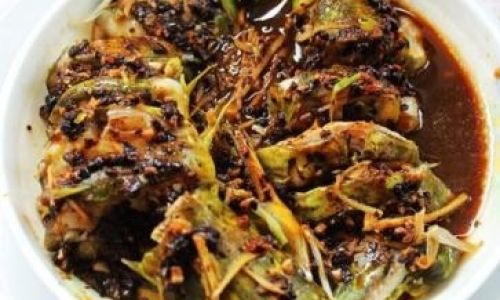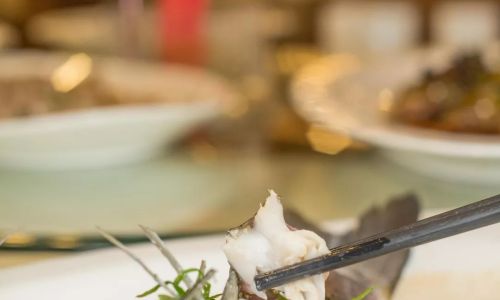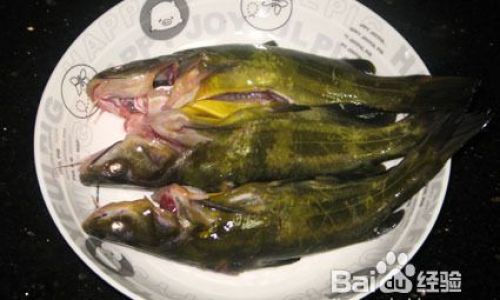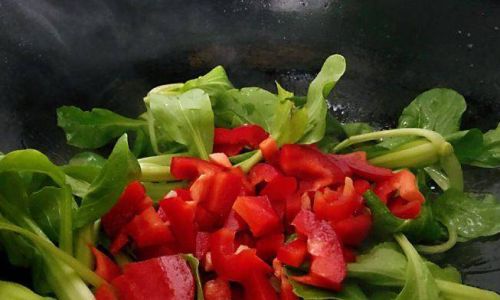Introduction
Steamed yellow catfish with black bean sauce, a quintessential Cantonese delicacy, embodies the essence of Chinese culinary philosophy—balance, freshness, and respect for ingredients. This dish, celebrated for its delicate texture and umami-rich flavor profile, has graced dining tables across Asia for generations. While its preparation may seem deceptively simple, achieving perfection requires precision, an understanding of flavor layering, and a reverence for the interplay between protein and aromatics. In this comprehensive guide, we will unravel the secrets behind this beloved recipe, from selecting the freshest fish to executing the perfect steaming technique. Whether you are a novice cook or a seasoned home chef, this journey will equip you with the knowledge to recreate this timeless dish in your own kitchen.
The Allure of Yellow Catfish
Yellow catfish, scientifically known as Pelteobagrus fulvidraco, is a freshwater species prized for its tender, flaky flesh and mild, sweet taste. Unlike its marine counterparts, yellow catfish boasts a low fat content and minimal fishy aroma, making it an ideal canvas for bold seasonings. When steamed, its flesh becomes velvety and moist, absorbing the nuanced flavors of the accompanying sauce. In Cantonese cuisine, steaming is revered as a cooking method that preserves the natural essence of ingredients, and yellow catfish epitomizes this principle.
Ingredients: The Foundation of Flavor
Before embarking on the culinary process, gathering high-quality ingredients is paramount. Here’s a detailed breakdown of each component:
-
Fresh Yellow Catfish (2 medium-sized, approximately 600-700 grams total):

Look for fish with clear eyes, shiny skin, and a mild, sea-breeze scent. Avoid specimens with cloudy eyes or a strong fishy odor, as these indicate spoilage.
-
Fermented Black Beans (Douchi, 2 tablespoons):
These salt-preserved soybeans, available in Asian grocery stores, are the soul of the dish. Rinse them thoroughly to remove excess salt before use.
-
Garlic (4 cloves, minced):
Adds pungency and depth. For a milder flavor, blanch the garlic briefly in hot water.
-
Ginger (1-inch knob, julienned):
Serves a dual purpose: its sharpness cuts through richness, while its juice tenderizes the fish.
-
Shaoxing Wine (1 tablespoon):
This Chinese cooking wine imparts a subtle caramel note and eliminates any lingering fishiness.
-
Soy Sauce (1 tablespoon light soy sauce + 1 teaspoon dark soy sauce):
Light soy sauce contributes saltiness, while dark soy sauce adds color and viscosity.
-
Oyster Sauce (1 teaspoon):
Enhances the sauce’s unctuousness with its briny sweetness.
-
Sesame Oil (½ teaspoon):
A finishing touch that lends a nutty aroma.
-
White Pepper (¼ teaspoon):
Provides a gentle heat without overwhelming the dish.
-
Green Onions (2 stalks, sliced into thin rings):
Half for garnish, half for steaming. The heat releases their fragrant oils.
-
Cilantro (½ bunch, chopped):
Adds a refreshing herbal note.
-
Peanut Oil (2 tablespoons):

For high-heat pouring to activate the aromatics.
-
Sugar (¼ teaspoon):
Balances the saltiness of the black beans and soy sauce.
-
Cornstarch (1 teaspoon, optional):
Mixed with water to thicken the sauce, if desired.
Step-by-Step Preparation
Preparing the Fish: The Key to Tender Perfection
-
Scaling and Cleaning:
Rinse the fish under cold water. Using a spoon or fish scaler, gently scrape off any residual scales, working from tail to head. Pat dry with paper towels to prevent sizzling during steaming.
-
Marinating:
Place the fish on a heatproof plate. Drizzle with Shaoxing wine and massage it into the flesh. This step deodorizes the fish and infuses it with aromatic undertones. Let it marinate for 15 minutes.
-
Scoring (Optional):
For thicker fish, make shallow diagonal cuts on both sides to ensure even cooking. This also allows the sauce to penetrate deeper.
Crafting the Aromatic Sauce: Umami in Motion
-
Black Bean Preparation:
Soak fermented black beans in warm water for 5 minutes to soften. Drain and mash lightly with a fork to release their intensity.
-
Aromatic Base:
In a mortar and pestle, combine minced garlic, half of the julienned ginger, and mashed black beans. Pound until a coarse paste forms. This mechanical action awakens the essential oils in the aromatics.
-
Sauce Assembly:
Transfer the paste to a bowl. Stir in light soy sauce, dark soy sauce, oyster sauce, sugar, and white pepper. Adjust seasoning to taste—the sauce should be savory with a hint of sweetness.
Steaming Technique: The Dance of Heat and Moisture
-
Preparing the Steamer:

Fill a wok or large pot with 2 inches of water. Bring to a rolling boil over high heat. Ensure the steamer rack sits above the waterline to prevent sogginess.
-
Layering Flavors:
Scatter the remaining ginger and half of the green onions beneath and on top of the fish. This creates a fragrant steam bath.
-
Steaming Duration:
Place the fish plate in the steamer, cover tightly, and steam for 8-10 minutes per 500 grams. Overcooking will toughen the flesh; undercooking leaves it raw. Check doneness by inserting a chopstick into the thickest part—it should glide through effortlessly.
The Final Flourish: Activation and Assembly
-
Sauce Application:
Once steamed, remove the fish from the steamer. Discard the cooking liquid (to avoid bitterness) and the spent ginger/green onions.
-
Garnish Layering:
Spread the black bean sauce evenly over the fish. Top with fresh green onions and cilantro.
-
Heat Infusion:
In a small saucepan, heat peanut oil until it shimmers (approximately 350°F/175°C). Drizzle the hot oil over the garnishes—the sizzle will release their aromatic oils, creating an intoxicating aroma.
-
Sauce Thickening (Optional):
If a thicker sauce is preferred, combine cornstarch with 1 tablespoon of water. Add to the steaming liquid, boil until thickened, and pour over the fish.
Expert Tips for Perfection
- Fish Selection: Opt for live yellow catfish if possible, as their freshness is unparalleled. If using frozen, thaw slowly in the refrigerator to prevent moisture loss.
- Sauce Consistency: For a glossier finish, add a teaspoon of oil to the sauce mixture before steaming.
- Steamer Maintenance: Line the steamer lid with a clean kitchen towel to absorb condensation, preventing water from diluting the sauce.
- Presentation: Serve the fish whole on a platter, as Cantonese tradition dictates, to symbolize abundance and unity.
Serving Suggestions
Steamed yellow catfish with black bean sauce pairs beautifully with:
- Steamed Jasmine Rice: The rice absorbs the flavorful sauce, creating a harmonious bite.
- Stir-Fried Bok Choy: A crisp, verdant contrast to the fish’s richness.
- Wonton Soup: A comforting broth to cleanse the palate between bites.
- Chilled Tofu: Its cool, silken texture complements the dish’s warmth.
Nutritional Highlights
This dish is a nutritional powerhouse, offering:
- Lean Protein: Yellow catfish is rich in omega-3 fatty acids, essential for heart and brain health.
- Antioxidants: Fermented black beans contain isoflavones, which may reduce inflammation.
- Low Calories: A 6-ounce serving provides under 200 calories, making it diet-friendly.
Cultural Context
In Cantonese households, steamed fish symbolizes prosperity and is a staple at Lunar New Year feasts. The phrase “nian nian you yu” (年年有余), meaning “may there be surplus every year,” is whispered as the dish is served, embodying hopes for abundance.
Troubleshooting Common Pitfalls
- Fishy Aftertaste: Ensure thorough rinsing and marinating with Shaoxing wine.
- Mushy Texture: Avoid oversteaming; set a timer and check frequently.
- Bland Flavor: Increase the black bean ratio or add a splash of fish sauce for depth.
Variations and Innovations
- Spicy Twist: Add sliced chili peppers to the sauce for a fiery kick.
- Mushroom Medley: Incorporate enoki or shiitake mushrooms beneath the fish during steaming.
- Citrus Zing: Garnish with lime wedges for a bright finish.
Conclusion
Steamed yellow catfish with black bean sauce is more than a dish—it’s a testament to the art of simplicity. By honoring the ingredients and mastering the techniques outlined here, you can elevate this humble recipe into a culinary masterpiece. Whether shared with family or savored solo, each bite celebrates the harmony of flavors that define Cantonese cuisine. So, gather your ingredients, ignite your steamer, and embark on a journey that transcends time and taste. As the sizzle of hot oil meets the fragrant garnishes, you’ll understand why this dish has endured for centuries—a symphony of texture, aroma, and taste that lingers long after the last morsel is gone.






0 comments